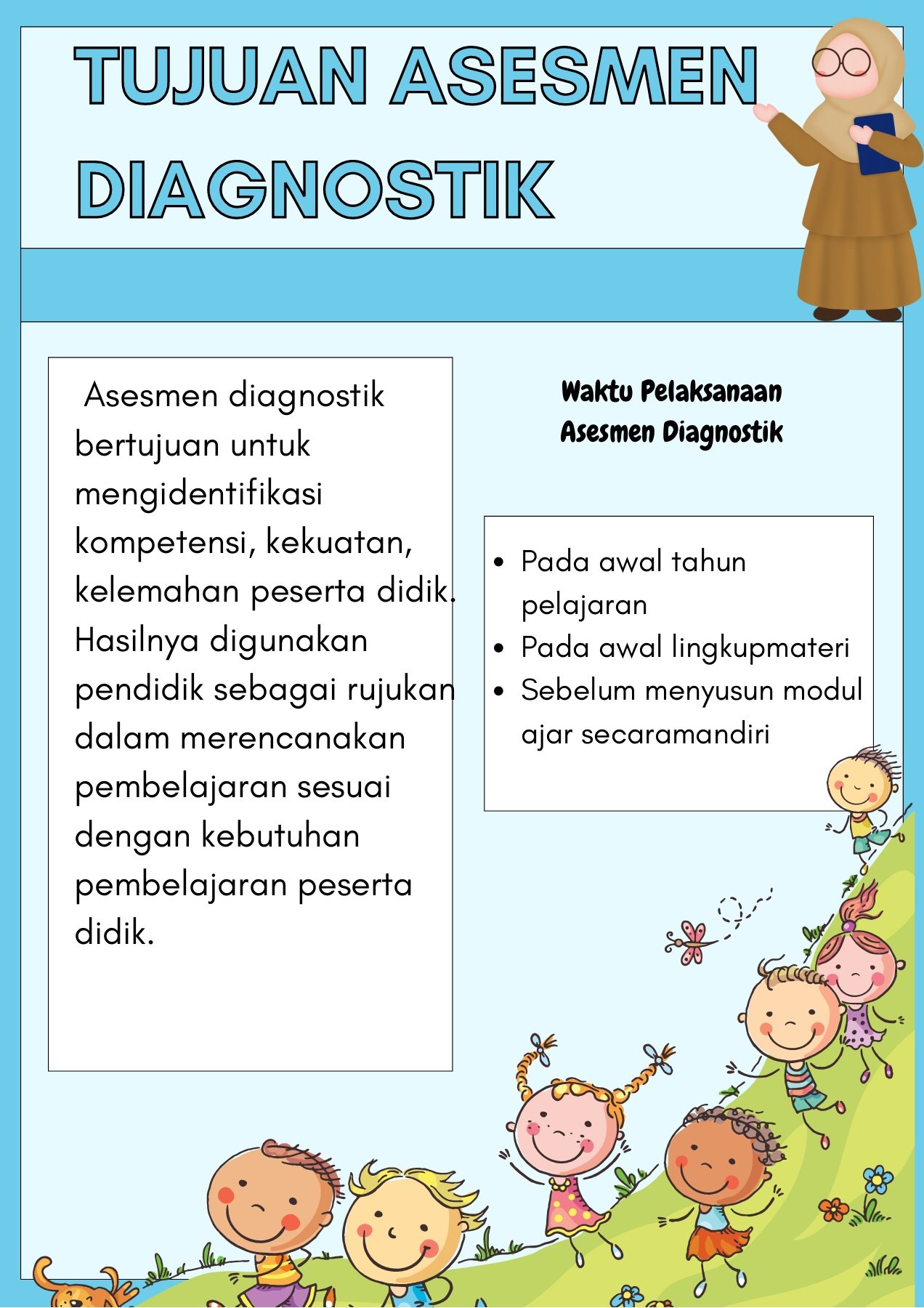
Asesmen awal pembelajaran bertujuan untuk mengidentifikasi kompetensi, providing educators with a clear picture of each student’s skills and knowledge. This initial assessment lays the groundwork for tailored teaching strategies that cater to individual learning needs. By recognizing strengths and weaknesses at the outset, teachers can create a focused learning environment that promotes growth and engagement.
In a world where personalized education is vital, understanding student competencies ensures that no one falls behind. Embracing this approach not only benefits students but also empowers educators to refine their methods and enhance overall learning outcomes.
Asesmen Awal Pembelajaran Bertujuan untuk Mengidentifikasi Kompetensi
Asesmen awal pembelajaran is a vital step in the educational process. Its primary purpose is to identify the competencies of students, allowing teachers to tailor their teaching approaches accordingly. Understanding where students stand in their learning journey helps educators create a supportive environment that fosters growth and development. In this article, we will delve into the significance of early assessment in learning, the types of assessments utilized, and how they contribute to better educational outcomes.
Understanding Asesmen Awal Pembelajaran
Asesmen awal pembelajaran, or initial assessment, refers to various methods teachers use to gauge students’ knowledge, skills, and competencies at the beginning of a learning phase. This type of assessment does not serve as a grade but rather as a diagnostic tool to inform instruction.
Key features of asesmen awal pembelajaran include:
- Identifying students’ prior knowledge and skills.
- Pinpointing areas that need reinforcement or further instruction.
- Creating a baseline for measuring future growth.
- Informing teachers about the learning needs of each student.
The insights gained from the initial assessment aid educators in customizing their instructional strategies to better meet the needs of their students.
Types of Asesmen Awal Pembelajaran
Various types of assessments can be used to identify competencies in students. Each type comes with its distinct advantages and can provide different insights into student learning.
Formative Assessments
Formative assessments occur during the learning process. They provide feedback that helps students improve while learning is still happening. Examples include:
- Quizzes and tests that assess understanding of key concepts.
- Class discussions that reveal student engagement.
- Observations of student participation and skills during activities.
These assessments help teachers adapt their methods in real-time, ensuring students grasp the material before moving on.
Summative Assessments
Summative assessments evaluate what students have learned at the end of a unit or course. They often take place after significant instruction. Examples include:
- Final exams to measure comprehensive knowledge.
- Projects that showcase student skills and understanding.
While summative assessments are valuable, they are less about immediate instructional adjustments and more about evaluating overall learning outcomes.
Diagnostic Assessments
Diagnostic assessments help identify specific learning needs before instruction starts. They can reveal students’ strengths and weaknesses in particular subjects or skills. Examples include:
- Pre-tests that assess prior knowledge before a new unit.
- Standardized tests that benchmark students against common standards.
This type of assessment can inform planning well before instruction begins, allowing teachers to consider varied teaching styles and resources.
The Importance of Identifying Competencies
Identifying competencies through early assessment is crucial for several reasons:
Personalized Learning
Every student is unique, with individual strengths and weaknesses. By identifying competencies early on, teachers can:
- Create personalized learning plans that cater to each student’s needs.
- Implement different teaching strategies to accommodate diverse learning styles.
Personalized learning increases student engagement and improves overall learning outcomes.
Setting Learning Goals
Once teachers identify what students know and what they still need to learn, they can set achievable learning goals. This process involves:
- Creating short-term objectives that lead to the larger learning outcomes.
- Encouraging students to take ownership of their learning progress.
Setting specific goals motivates students and gives them a clear direction in their studies.
Growth Monitoring
Asesmen awal pembelajaran provides a starting point to monitor growth over time. Teachers can regularly assess students to:
- Evaluate progress toward learning goals.
- Adjust teaching methods based on individual or group performance.
Tracking growth helps educators understand the effectiveness of their instruction.
Implementing Asesmen Awal Pembelajaran
Implementing effective initial assessments requires thoughtful planning and execution. Here are some essential steps:
Planning the Assessment
Before conducting an assessment, teachers should:
- Define the competencies they intend to assess clearly.
- Select appropriate methods and tools for the assessment.
- Determine the timing of assessments to collect data effectively.
Well-planned assessments lead to more accurate and useful results.
Conducting the Assessment
When conducting the assessment, teachers should:
- Create a comfortable and supportive environment so that students feel at ease.
- Clearly explain the purpose and expectations of the assessment.
- Ensure that assessments are fair and accessible to all students.
A positive assessment experience leads to more reliable data.
Analyzing the Results
After completing the assessment, it’s time to analyze the results. Teachers should:
- Look for patterns or trends in student responses.
- Identify specific areas of strength and weakness for each student.
- Use the data to inform instructional planning.
Proper analysis of results provides peace of mind and clarity regarding future teaching strategies.
Challenges in Asesmen Awal Pembelajaran
While early assessment is beneficial, it also comes with challenges. Addressing these challenges can enhance the effectiveness of the assessment process.
Time Constraints
Teachers often struggle to find time for assessments amidst other teaching responsibilities. To tackle this challenge, educators can:
- Integrate assessments into regular class activities.
- Utilize technology tools that offer quick assessments and feedback.
Finding efficient ways to assess without taking too much time is key.
Student Anxiety
Some students may experience anxiety during assessments, which can skew results. To minimize anxiety, teachers can:
- Use low-stakes assessments that do not count toward grades.
- Reassure students about the purpose of the assessment being for learning, not just evaluation.
Creating a supportive atmosphere can help students perform to the best of their abilities.
Equity in Assessment
Ensuring that all students have equal opportunities to demonstrate their competencies is vital. To promote equity, teachers should:
- Provide accommodations for students with diverse needs.
- Be mindful of cultural backgrounds and language barriers.
Equitable assessment practices benefit all learners.
Best Practices for Asesmen Awal Pembelajaran
To maximize the effectiveness of asesmen awal pembelajaran, teachers can employ the following best practices:
Use Multiple Assessment Methods
Employing various assessment methods provides a comprehensive view of student competencies. Consider using:
- Written assessments, hands-on activities, and group work.
- Self-assessments and peer assessments to encourage reflection.
A mix of methods helps capture different aspects of learning.
Provide Feedback
Feedback is crucial for student growth. Teachers should:
- Offer constructive feedback that highlights strengths and areas for improvement.
- Encourage students to reflect on their performance and set personal learning goals.
Timely feedback fosters a growth mindset among students.
Engage Students in the Process
Involving students in their assessment process creates ownership over their learning. Teachers can:
- Discuss the importance of competencies and how assessments help.
- Encourage students to track their progress and reflect on their learning journey.
Engaged students are often more motivated and invested in their learning.
Asesmen awal pembelajaran serves as a fundamental tool for identifying competencies in students. By using various assessment methods, teachers can customize their instruction, set realistic goals, and monitor growth. While challenges may arise, implementing best practices and creating a supportive learning environment can lead to successful outcomes. Through effective early assessment, educators empower students, helping them achieve their fullest potential.
AKSI NYATA MELAKUKAN ASESMEN AWAL PEMBELAJARAN #ASESMENDIAGNOSTIK#
Frequently Asked Questions
“`html
What methods are commonly used in initial assessments to identify competencies?
Initial assessments often utilize various methods, including standardized tests, observational assessments, and informal interviews. Standardized tests provide measurable data on students’ knowledge and skills. Observational assessments allow educators to gauge students’ abilities in real-time during activities. Informal interviews can help understand students’ perspectives and prior experiences, contributing valuable insights into their competencies.
How does initial assessment impact teaching strategies?
Initial assessment significantly influences teaching strategies by informing educators about students’ strengths and weaknesses. With this information, teachers can tailor their approaches to meet individual needs, ensuring that instruction is relevant and effective. Adjustments may include modifying lesson plans, grouping students with similar competencies, or providing additional support to those who need it.
What role do initial assessments play in setting learning objectives?
Initial assessments help educators establish clear and measurable learning objectives. By identifying students’ current competencies, teachers can define goals that challenge students appropriately. This alignment ensures that learning objectives are attainable and relevant, fostering a better learning environment where students can progress at their own pace.
How can initial assessments support student motivation?
Initial assessments can enhance student motivation by providing personalized feedback and recognizing individual accomplishments. When students see their strengths highlighted, they are more likely to engage with the material and take ownership of their learning. Additionally, setting achievable goals based on assessment results can motivate students to strive for improvements.
What challenges do educators face when conducting initial assessments?
Educators often encounter several challenges during initial assessments, including time constraints, varying student readiness levels, and potential bias in assessment methods. Balancing thorough assessments with limited time can be difficult. Moreover, recognizing the diverse abilities of students and ensuring that assessments fairly evaluate all competencies requires careful planning and execution.
“`
Final Thoughts
Asesmen awal pembelajaran bertujuan untuk mengidentifikasi kompetensi. This initial assessment allows educators to gauge students’ existing knowledge and skills, ensuring that the learning experience is tailored to their needs. By understanding these competencies, teachers can create more effective lesson plans and interventions.
Moreover, early assessment fosters a supportive learning environment where students feel acknowledged and motivated. It sets the stage for meaningful engagement and progress throughout the educational journey. Ultimately, recognizing each student’s starting point is essential for guiding them toward success.




